- Home
- Orhan Pamuk
Istanbul Page 29
Istanbul Read online
Page 29
Three weeks later, when the school holidays were over, I started going to the gates of Dame de Sion when school let out. From a distance, I watched the girls coming out one by one and waited for the Black Rose to appear. Ten days later, I was forced to accept that the effort was useless and I had to stop, but every afternoon my legs would still take me to the lycée gates, where I would stay until the crowds had dispersed. One day, her eldest and favorite brother emerged from the crowd, told me that his sister sent me her fondest regards from Switzerland, and handed me an envelope. In her letter, which I read in a pudding shop while smoking a cigarette, she told me she was very happy with her new school but that she missed me and Istanbul a lot.
I wrote her nine long letters, seven of which I put into envelopes and five of which I posted. I never received an answer.
CHAPTER THIRTY-SIX
The Ship on the Golden Horn
In February 1972, when I was in my second year of studying architecture, I found myself going to class less and less. How much did this have to do with the loss of my beautiful model and the lonely melancholy into which I withdrew afterward? Sometimes I wouldn’t leave our Beşiktaş house at all but spent the whole day reading. Sometimes I would take a thick book (The Possessed, War and Peace, Buddenbrooks) with me and read it during class. After the Black Rose disappeared, my pleasure in painting continued to wane. When drawing on canvas or paper or when brushing on paint, I no longer felt that sense of play, that sense of victory I had had as a child. Painting had started as a happy childish amusement and now, mysteriously, I was losing that joy, and as I had no idea what might replace it, a dense cloud of unease engulfed me. To live without painting, to have no escape from the real world—what other people called “life”—was turning into a prison. If my dread overpowered me—and if I’d been smoking to excess—it became difficult to breathe. Being short of breath in ordinary life made me feel as if I were drowning. I’d be overcome by a desire to do myself harm or else run away from this class I was in, this school.
But still I went to my studio from time to time and did my best to forget my almond-scented model—or to do the opposite and try to conjure her up with another painting. But there was something missing. My mistake was to persist in the delusion that painting could still offer me such pleasure as only a child can enjoy, when I was no longer a child. In the middle of a painting, I’d see where it was going and, deciding it was not good enough, leave it half finished. These bouts of indecision led me to conclude that if every new painting was to bring me the happiness art had brought me as a child, I would have to settle my purpose before I started. But I had no idea how I might go about thinking about painting in such a way. Perhaps because until now I’d always felt happy while painting, I did not understand that I had to suffer to paint, that this pain might in fact help develop my art.
It also scared me to see my disquiet spread to other interests: After years of claiming that architecture was an art, I realized that architecture had no more to offer me than painting. I had never been particularly interested in it as a child, unless I counted the games I’d played with sugar cubes and wooden blocks. And as my mostly uninspired teachers at the Technical University possessed the souls of engineers, had no sense of play, and took no creative pleasure in architecture, their classes began to seem a waste of time, distractions from the things I really should be doing, the “truer” life I thought I should be living. Everything around me palled when thoughts like these came to me—the lecture I was attending, the bell I longed to ring, the teachers strutting about their classrooms, the students joking and smoking between classes—they’d turn into their own ghosts, trapped as I was inside this aimless, false, and suffering world that promised me only self-loathing and suffocation. I would feel my allotted time slipping away and my destination receding, as happened so often in my dreams. To fight off this nightmare, I would write a few things or do a few drawings in my notebooks during class: I would sketch my professor and the backs of his more attentive students, and I would write parodies, pastiches, simple rhyming couplets, about what was going on in class.… Soon I had an audience that anxiously awaited each installment, but in spite of this the sense of time slipping away—and my dread that my life was even now voiding itself of meaning—grew so powerful that if I entered the architecture faculty in Taşkışla intending to spend the whole day there, an hour later I’d be bolting out of the building as if for my life (and heedless of whether I was stepping on the cracks between the pavement slabs); having thrown myself outside, I would escape into the Istanbul streets.
The back streets between Taksim and Tepebaşı, through which I’d passed as a child when my mother and I would go home in a dolmuş and which had seemed to a six-year-old like a distant land, and the Pera neighborhoods so masterfully built by Armenians that they were still standing—these were the places I now began to explore. Sometimes I would go straight from the Architectural Faculty to Taksim, board any bus, and go wherever my fancy or my feet happened to take me: the mean narrow streets of Kasımpaşa; Balat, which on my first visit had looked fake, like a film set; the old Greek and Jewish neighborhoods that new immigrants and poverty had changed beyond recognition; the very Muslim, very bright back streets of Üsküdar, which were full of wooden houses right up until the 1980s; the eerie old streets of Kocamustafapaşa, ruined by hastily constructed and sinister-looking concrete apartment buildings; the beautiful courtyard of Fatih Mosque, which never failed to delight me; the area around Balıklı; the neighborhoods of Kurtuluş and Feriköy, which, as they got poorer, seemed older, giving one the impression that middle-class families had been there for thousands of years, changing language, race, religion as the oppressive state required (in fact it had been only fifty); the poorer neighborhoods perched on the lower slopes (just as in Cihangir, Tarlabaşı, and Nişantaşı)—I made my way through all these places aimlessly. In the beginning the point was not to have a point, to escape the world in which everyone had to have a job, a desk, an office. But even as I explored the city wall by wall, street by street, I poured my own angry, evil melancholy into it. Even now, if I happen to pass through the same streets and see a ruined neighborhood fountain or a ruined wall belonging to a Byzantine church (Pantocrator, Küçük Ayasofya) that looks somehow older, or when I look down an alley and see the Golden Horn shimmering between the wall of a mosque and an apartment building covered with ugly mosaic tiles, I will remember how troubled I was the first time I looked at this view from the same angle and notice how different the view looks now. It’s not my memory that’s false; the view looked troubled then because I myself was troubled. I poured my soul in the city’s streets, and there it still resides.
If we’ve lived in a city long enough to have given our truest and deepest feelings to its prospects, there comes a time when—just as a song recalls a lost love—particular streets, images, and vistas will do the same. It may be because I first saw so many neighborhoods and back streets, so many hilltop views, during these walks I took after I lost my almond-scented love, that Istanbul seems such a melancholy place to me.
When the loss was still new, I saw my mood reflected everywhere—a full moon would become a clock face; everything was some symbol of the sort that would later make a dream. In March 1972 I boarded a doltnuş (just as I had done with the Black Rose), alighting, as it was still possible to do in those days, where I wished, which in this case was the Galata Bridge. The sky was a low, dark, grayish purple. It looked as if it might be about to snow, and the bridge walkways were empty. Spotting the wooden stairs on the Golden Horn side of the bridge, I descended to the pier.
Here I found a small city ferry that was about to leave. The captain, the machinist, and the rope man had all gathered on the landing like the crew of an ocean liner, greeting the handful of passengers as they smoked and sipped tea and chatted among themselves. When I stepped on board, I adapted to my new circumstances and greeted them too, and immediately felt as if my tired fellow passengers, with their dul
l coats, their skullcaps, their scarves, and their string bags, were old acquaintances and I was just another commuter who traveled up and down the Golden Horn on this ferry every day. When it slipped quietly into motion, I felt this sense of belonging, this sense of sitting now in the heart of the city, and I felt it with such intensity that I also felt something else. Above us, on the bridge (where I could see bank advertisements and the antennae of trolleybuses) and on the city’s main roads, it was around noon on a day in March 1972; but here, in the world below, we belonged to an older, broader, weightier time. It seemed to me that in scrambling down the stairs to the ferry that I’d noticed only by chance, I’d gone back thirty years to the days when Istanbul was more isolated from the world, poorer, and more nearly in harmony with its melancholy.
Through the trembling windows in the rear of the ship’s upper deck, I watched the Golden Horn’s landings slowly flowing past, and its hills, covered with the wooden houses of old Istanbul, and its cypress-filled cemeteries; alleyways, dark hills, shipyards, rusting hulls; an endless string of little factories, shops, and chimneys; ruined Byzantine churches; the most magnificent Ottoman mosques rising above the dingiest and narrowest streets; the Church of the Pantocrator in Zeyrek; the great tobacco warehouses of Cibali; even the shadow of Fatih Mosque far in the distance. Through the ship’s clouded, trembling windows, this midday scene seemed, like the Istanbul views I saw in disintegrating old movies, as dark as midnight.
The ferry’s engine made a noise like my mother’s sewing machine, cutting out abruptly as it approached a landing; the windows would stop trembling, and the still waters of the Golden Horn, the old aunties boarding the ship with fifty baskets, chickens and roosters and the narrow streets of the old Greek neighborhoods behind them; the little factories and warehouses and barrels; the old car tires; the horse-drawn carriages that wandered about the city—they all looked as finely and clearly drawn as in hundred-year-old postcards, and they all looked black and white. When the ferry moved away from the shore and the windows began to tremble again, as we moved toward the cemeteries of the opposite shore, the black smoke from the ship’s funnel would veil the view in a melancholy that made it look even more like a picture. At times the sky seemed pitch black, but then, just like a corner in a film that suddenly comes aflame, a cold snow light would appear.
Is this the secret of Istanbul—that beneath its grand history, its living poverty, its outward-looking monuments, and its sublime landscapes, its poor hide the city’s soul inside a fragile web? But here we have come full circle, for anything we say about the city’s essence says more about our own lives and our own states of mind. The city has no center other than ourselves.
So how did I come to feel so much at one with my fellow İstanbullus on that day in March 1972 when I skipped class to ride down the Golden Horn on that old ship all the way to Eyüp? Perhaps it was that I wished to convince myself that, next to the great hüzün of the city, my own heartbreak and the loss of my love for painting—the love I thought would carry me through life—were not important. That by looking at Istanbul, so much more defeated, ruined, and sorrowful, I would forget my own pain. But to say such a thing would be to talk in the language of Turkish melodrama, like a hero who is already afflicted with melancholy when the film begins and so destined to lose “in life and in love”—and it won’t do to use the city’s melancholy to explain away my own. In fact, no one in my family or my circle of friends had taken my ambitions to be a poet-painter at all seriously. As for the city’s poets and painters, most had their eyes so firmly pinned on the West that they couldn’t even see their own city: They were struggling to belong to the modern age, the world of the trolleybuses and bank advertisements on top of the Galata Bridge. I had not yet attuned myself to the melancholy that gave the city its gravitas—because of the happy, playful child inside me I was perhaps the person most removed from it; until now, I’d had no desire to embrace it; feeling it inside me, I’d run the other way to take refuge in Istanbul’s “beauties.”
Why should we expect a city to cure us of our spiritual pains? Perhaps because we cannot help loving our city like a family. But we still have to decide which part of the city we love and invent the reasons why.
As the ferry approached Hasköy, it occurred to me, in my sad confusion, that if I had come to feel deeply connected to my city, it was because it offered me a deeper wisdom and understanding than any I could acquire in a classroom. Through the ship’s trembling windows I could see the ruined old wooden houses; the old Greek neighborhood of Fener, still half abandoned due to relentless state oppression; and among these ruined buildings, looking more mysterious than ever under the dark clouds—Topkapı Palace, Süleymaniye Mosque, and the silhouette of Istanbul’s hills, mosques, and churches. Here amid the old stones and the old wooden houses, history made peace with its ruins; ruins nourished life and and gave new life to history. If my fast-extinguishing love of painting could no longer save me, the city’s poor neighborhoods seemed prepared, in any event, to become my second world. How I longed to be part of this poetic confusion! Just as I had lost myself in my imagination to escape my grandmother’s house and the boredom of school, now, having grown bored with studying architecture, I lost myself in Istanbul. So it was that I finally came to relax and accept the hüzün that gives Istanbul its grave beauty, the hüzün that is its fate.
I rarely returned to the real world empty-handed. I would bring home a serrated telephone token of a type no longer in circulation or some obscure object I’d jokingly tell my friends could be used “either as a shoehorn or a bottle opener”; I’d bring back a chip of a brick that had fallen off a thousand-year-old wall; a wad of Imperial Russian banknotes, which all the city’s junk dealers had in abundance at that time; I’d bring back the stamp from a company that had gone under thirty years earlier; weights from a street vendor’s scale; the cheap old volumes I’d buy at the end of almost every trip, when my feet would take themselves to Sahaflar Secondhand Book Market.… I craved books and magazines about Istanbul—any type of printed matter, any program, any timetable or ticket was valuable information to me, and so I began to collect them. A part of me knew I could not keep these things forever; after I had played with them for a while, I would forget them. And so I knew I would never become one of those obsessive collectors whose work is never done, or even an insatiable collector of knowledge like Koçu, though in the early days I told myself that eventually it would all form part of a great enterprise—a painting or a series of paintings or a novel like those I was then reading by Tolstoy, Dostoyevsky, and Mann. There were times—when every strange memento seemed saturated with the poetic melancholy of lost imperial greatness and its historical residue—that I imagined myself to be the only one who had unlocked the city’s secret; it had come to me as I watched through the windows of the Golden Horn ferry, and I had embraced the city as my own—no one had ever seen it as I did now!
Once I had mastered this new poetic outlook, I chased with unchecked ardor after anything and everything connected with the city. Everything I touched in this state of mind, every piece of knowledge, every artifact, seemed like a work of art. Before my elation subsides, let me describe one such ordinary thing, that ferry with the trembling windows.
It was called the Kocataş. It was built in 1937 in the Golden Horn, in Hasköy shipyard, along with its sister ship, the Sariyer. They’d been fitted with two engines made in 1913 and salvaged from a yacht named the Nimettillah, formerly the property of Hıdiv Hilmi Paşa. Can we deduce from the trembling windows that the engine didn’t suit the ferry? Such details allow me to feel myself a true İstanbullu and give depth to my melancholy. After it had dropped me off in Eyüp, the little Kocataş would continue operating for another twelve years, to be taken out of service in 1984.
The objects I brought back from my aimless walks, my attempts at “getting lost”—a few old books, a calling card, an old postcard, or a strange piece of information about the city—these things were indi
spensable proof that the walk I’d taken was “real.” Like the Coleridge hero who wakes to find himself holding the rose of his dreams, I knew these objects were not of the second world, which had brought me so much contentment as a child, but of a real world that matched my memories.
The trouble with Eyüp, where the Kocataş left me, was that this perfect little village at the end of the Golden Horn did not seem real at all. As an image of the inward-looking, mysterious, religious, picturesque, and mystical East it was so perfect as to seem like someone else’s dream, a sort of Turkish Eastern Muslim Disneyland planted on the edge of the city. Was this because it was outside the old city walls and therefore without the Byzantine influence or the many-layered confusions you saw elsewhere in the city? Did the high hills bring night earlier to this place? Or had Eyüp decided out of religious and mystic humility to keep its buildings small, keep its distance from the greatness of Istanbul, and keep its complex power—the power it derives from its dirt, its rust, its smoke, its wrecks, its cracks, its remains, its ruins, its filth? What makes Eyüp so close to western dreams of the East and makes everyone love it so? Is it its continuing ability to derive full benefit from the West and westernizing Istanbul, while still keeping itself distant from the center, the bureaucracy, the state institutions and buildings? This was why Pierre Loti loved the place, finally buying a house and moving here—because it was unspoiled, a perfect, beautiful image of the East—and for the same reasons I found it irksome. When I arrived in Eyüp, the delicious melancholy that had come to me from the view of the Golden Horn, with its ruins and its history, vanished into thin air. I was slowly coming to understand that I loved Istanbul for its ruins, for its hüzün, for the glories once possessed and later lost. And so, to cheer myself up, I left Eyüp to wander around other neighborhoods in search of ruins.

 Snow
Snow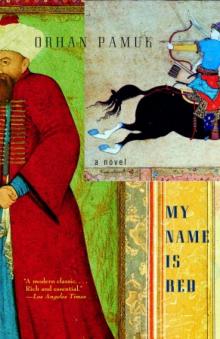 My Name is Red
My Name is Red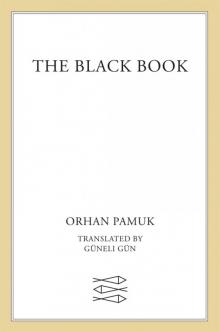 The Black Book
The Black Book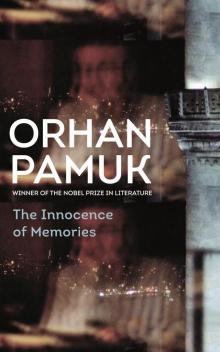 The Innocence of Memories
The Innocence of Memories The White Castle
The White Castle Other Colors
Other Colors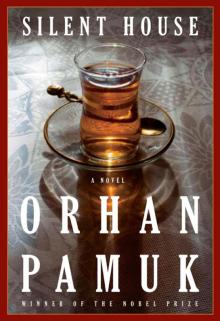 Silent House
Silent House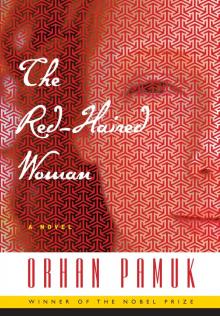 The Red-Haired Woman
The Red-Haired Woman The Museum of Innocence
The Museum of Innocence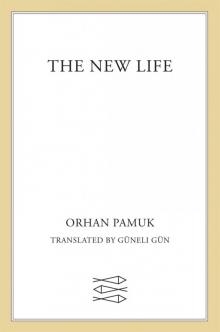 The New Life
The New Life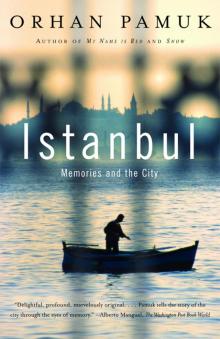 Istanbul
Istanbul